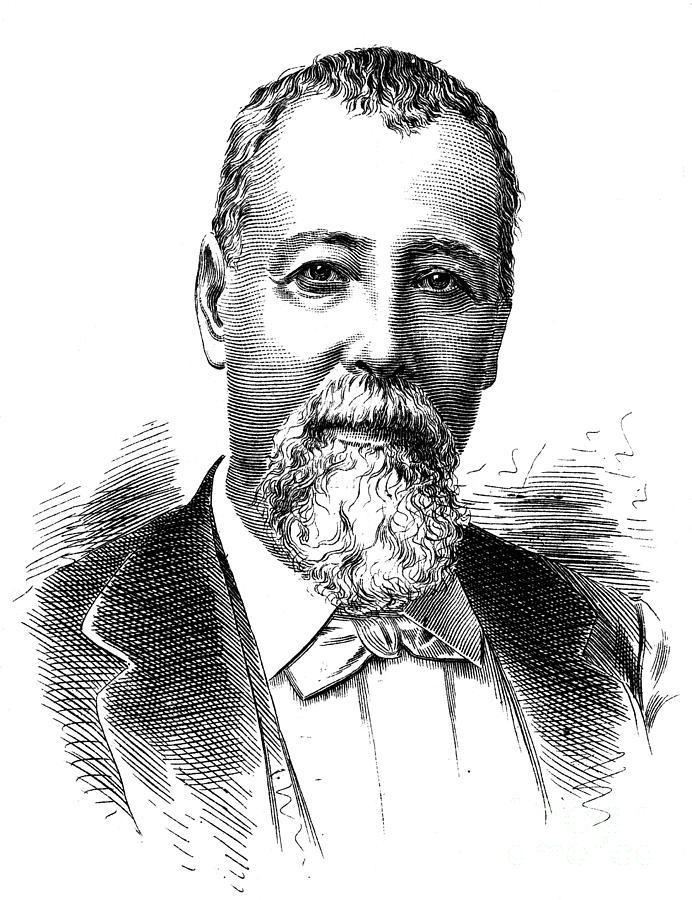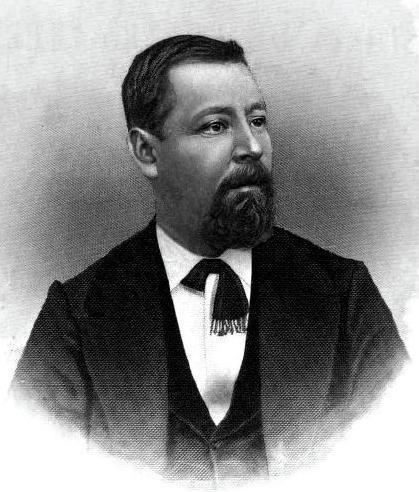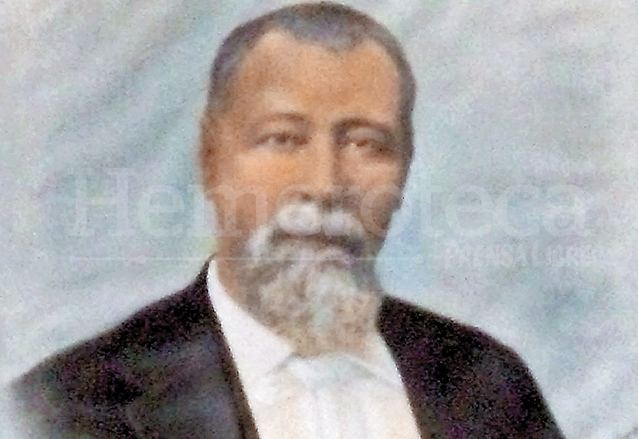Profession Army General Name Justo Barrios | Spouse(s) Francisca Aparicio | |
 | ||
Religion Roman Catholic, then Positivism Died April 2, 1885, Chalchuapa, El Salvador | ||
Preceded by Miguel Garcia Granados | ||
Conmemoran 119 a os de la muerte del general justo rufino barrios
Justo Rufino Barrios (July 19, 1835, in San Lorenzo, San Marcos – April 2, 1885, in Chalchuapa, El Salvador) who was President of Guatemala was known for his liberal reforms and his attempts to reunite Central America.
Contents
- Conmemoran 119 a os de la muerte del general justo rufino barrios
- La casa de justo rufino barrios 2 of 2
- Early life
- Rise to power
- Government
- Guatemala administrative structure during his tenure
- Economy
- Second term
- Central America Union
- Death
- References

La casa de justo rufino barrios 2 of 2
Early life

Barrios was known from his youth for his intellect and energy, went to Guatemala City to study law, and became a lawyer in 1862.
Rise to power

In 1867, revolt broke out in western Guatemala, which many residents wished to return to its former status of an independent state as Los Altos. Barrios joined with the rebels in Quetzaltenango, and soon proved himself a capable military leader, and in time gained the rank of general in the rebel army.

In July 1871, Barrios, together with other generals and dissidents, issued the "Plan for the Fatherland" proposing to overthrow Guatemala's long entrenched Conservadora (conservative) administration; soon after, they succeeded in doing so, and General García Granados was declared president and Barrios commander of the armed forces. While Barrios was back in Quetzaltenago, García Granados was seen as weak by his own party members and was asked to call for elections, as the general consent was that Barrios would make a better president. Barrios was elected president in 1873.
Government

The Conservative government in Honduras gave military backing to a group of Guatemalan Conservatives wishing to take back the government, so Barrios declared war on the Honduran government. At the same time, Barrios, together with President Luis Bogran of Honduras, declared an intention to reunify the old United Provinces of Central America.

During his time in office, Barrios continued with the liberal reforms initiated by García Granados, but he was more aggressive implementing them. A summary of his reforms is:
Barrios had a National Congress totally pledge to his will, and therefore he was able to create a new constitution in 1879, which allowed him to be reelected as president for another six-year term.
He also was intolerant with his political opponents, forcing a lot of them to flee the country and building the infamous Guatemalan Central penitentiary where he had numerous people incarcerated and tortured.
Guatemala administrative structure during his tenure
Appleton's guide for México and Guatemala from 1884, shows the twenty departments in which Guatemala was divided during Barrios' time in office:
Barrios oversaw substantial cleaning and rebuilding of Guatemala City, and set up a new and accountable police force. He brought the first telegraph lines and railroads to the republic. He established a system of public schools in the country.
Economy
During Barrios' tenure, the "Indian land" that the conservative regime of Rafael Carrera had so strongly defended was confiscated and distributed among those officers who had helped him during the Liberal Revolution in 1871. Decree # 170 (a.k.a. Census redemption decree) made it easy to confiscate those lands in favor of the army officers and the German settlers in Verapaz as it allowed to publicly sell those common Indian lots. Therefore, the fundamental characteristic of the productive system during Barrios' regime was the accumulation of large extension of land among few owners and a sort of "farmland servitude," based on the exploitation of the native day laborers.
In order to make sure that there was a steady supply of day laborers for the coffee plantations, which required a lot of them, Barrios' government decreed the Day Laborer regulations, labor legislation that placed the entire native population at the disposition of the new and traditional Guatemalan landlords, except the regular clergy, who were eventually expelled form the country and saw their properties confiscated. This decree set the following for the native Guatemalans:
- Were forced by law to work in farm lands when the owners of those required them, without any regard for where the native towns were located.
- Were under control of local authorities, who were in charge to make sure that day laborer batches were sent to all the farms that required them.
- Were subject to "habilitation:" a type of forced advanced pay, which buried the day laborer in debt and then made it legal for the landlords to keep them on their land for as long as they wanted.
- Created the day laborer booklet: a document that proved that a day laborer had no debts to his employer. Without this document, any day laborer was at the mercy of the local authorities and the landlords.
Second term
In 1879, a constitution was ratified for Guatemala (the Republic's first as an independent nation, as the old Conservador regime had ruled by decree). In 1880, Barrios was reelected President for a six-year term. Barrios unsuccessfully attempted to get the United States of America to mediate the disputed boundary between Guatemala and Mexico.
Central America Union
Guatemala, El Salvador, and Honduras agreed to reform the Central American Union, but then Salvadoran President Rafael Zaldivar decided to withdraw from the union, and sent envoys to Mexico to join in an alliance to overthrow Barrios. Mexican President Porfirio Díaz feared Barrios' liberal reforms and the potential of a strong Central America as a neighbor if Barrios' plans bore fruit. Díaz sent Mexican troops to seize the disputed land of Soconusco.
Death
Justo Rufino Barrios died during the Chalchuapa Battle in El Salvador, as did his son General Venancio Barrios on April 2, 1885. The official liberal version is that Barrios was killed in action, alongside officer Adolfo V. Hall. However, there are some versions insisting that a Guatemalan soldier missed a shot and killed president Barrios from behind or that there might have been a murder plot.
Upon learning about his death, the Guatemalan Army panicked; officer José María Reyna Barrios, president Barrios' nephew, picked up the lifeless body of Venancio Barrios and organized the withdrawal of the Guatemalan battalions, while preparing the defense against a possible Salvadorian attack. Reyna Barrios, signing as Rosario Yerjabens, told the story of what he saw, which does not match the official account: "The general in Chief, Justo Rufino Barrios, decided, about 8 a.m., to personally command the attack on the northeast side of "Casa Blanca"; and in order to accomplish that, he sent the Jirón Brigade, whose soldiers were all Jalapas. These soldiers behaved in the most cowardly and disgraceful way. It is believed that they had been indoctrinated by some miserable traitor, one of those men without heart or conscience, one of those ungrateful people that was licking their benefactor's hand and abusing both his good heart and fortune. Unfortunately, a moment after the attack began, an enemy bullet wounded him mortally and he had to be taken off the battlefield. This sad occurrence was enough for some coward Jalapa soldiers who saw general Barrios dead, to leave their post and spread the sad news."
On April 4, the defeated Guatemalan forces arrived to Guatemala City, where Reyna Barrios was promoted to general for his valiant battle services.
Today, his portrait is on the five quetzal bill in Guatemala, and the city and port of Puerto Barrios, capital of Izabal, bears his name.
